Understanding Pool Skimming
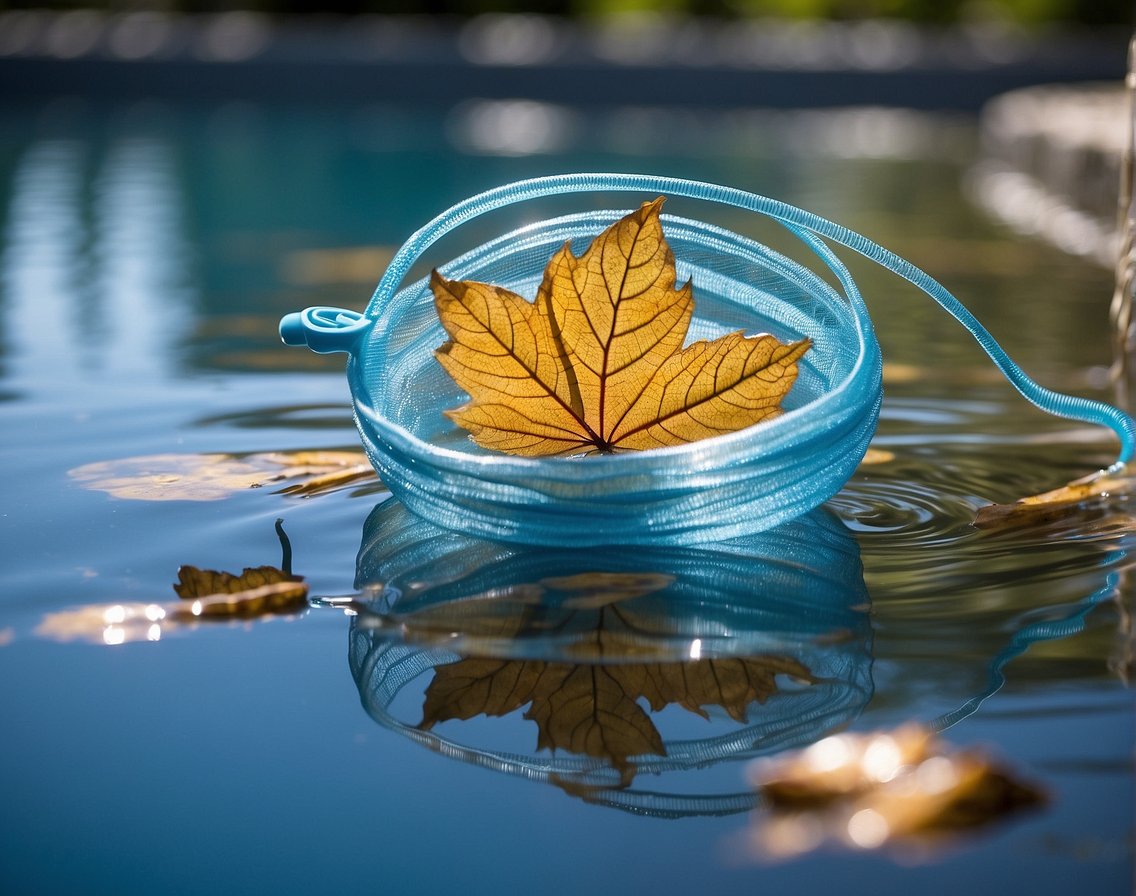
Pool skimming is a crucial maintenance task that keeps our swimming pool water clean and clear. We typically employ a skimmer net, which is a fine-mesh net attached to a long pole, to manually remove debris from the pool surface. This debris commonly includes leaves, insects, and other organic matter that can cloud our pool water and affect its chemical balance.
In addition to manual skimming, an automatic pool skimmer may be used. These devices move around the surface of the pool, efficiently collecting debris into a built-in basket. They are especially helpful in maintaining large pools or those frequently littered with debris.
Let’s look at why regular skimming is important:
- Prevents Clogging: Regular removal of debris helps prevent the pool’s filtration system from getting clogged.
- Chemical Efficiency: It ensures chemicals we add to the pool work more efficiently, as there is less organic matter to contend with.
- Aesthetic Appeal: A debris-free pool is visually appealing and more inviting for a swim.
We use the following common tools and methods for effective pool skimming:
- Skimmer Net: Manually operated, ideal for daily cleaning of floating debris.
- Built-in Pool Skimmers: Usually located at the sides of the pool, they draw in water and capture debris.
- Automatic Pool Cleaners: These roam the pool surface and require less frequent manual intervention.
For best results, we should skim the pool daily or at least several times per week, depending on the amount of debris and usage. Regular skimming is an easy yet essential step in pool maintenance, ensuring that our pools remain an enjoyable and safe environment.
Maintaining Proper Water Chemistry
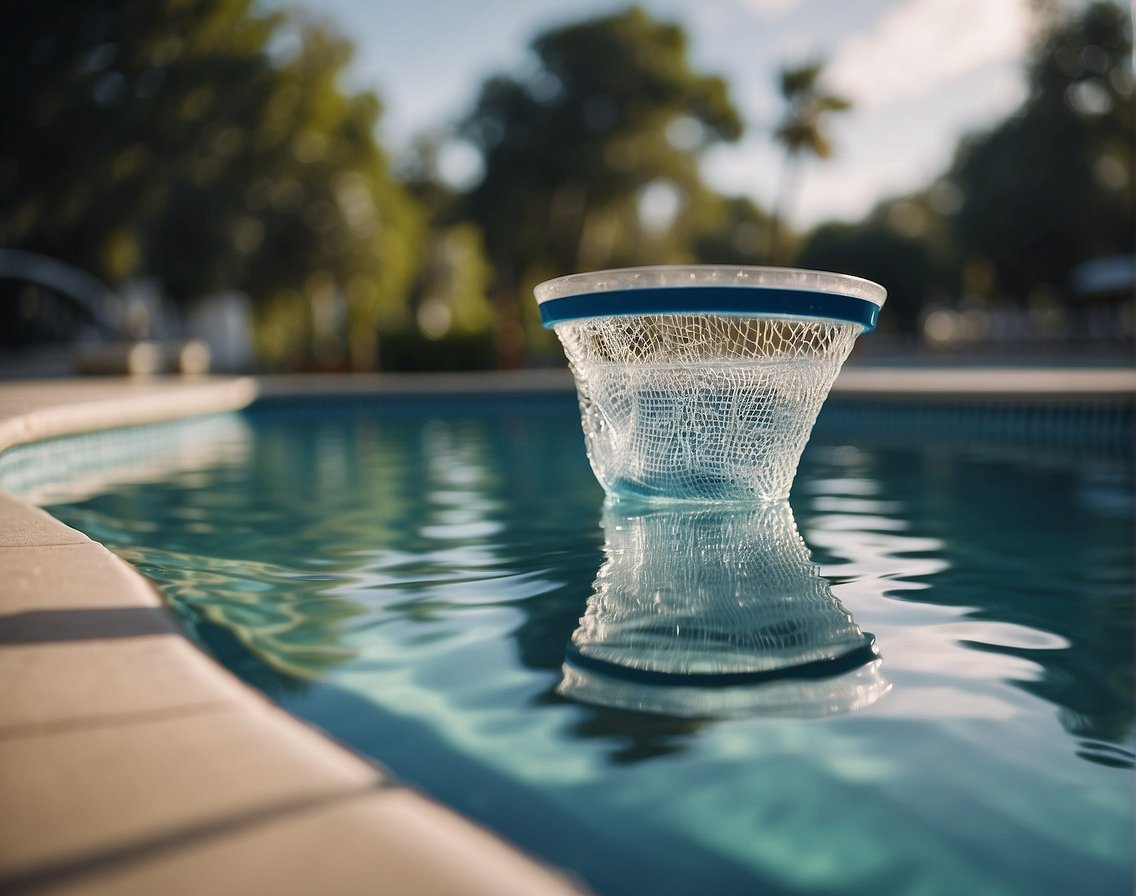
Proper water chemistry is essential for keeping pool water clean and clear. We must routinely test and adjust chemical levels to prevent algae growth and to keep the pool safe for swimmers.
Balancing pH and Alkalinity
pH Level: It’s critical to maintain the pH level between 7.2 and 7.8. We use test kits to determine the current pH, and if necessary, add pH increasers or decreasers accordingly. A well-balanced pH ensures comfort for swimmers and optimizes sanitizer efficiency.
- Ideal pH Level: 7.2 – 7.8
- Increase pH: Sodium carbonate (soda ash)
- Decrease pH: Sodium bisulfate or muriatic acid
Alkalinity: Similarly, we aim for total alkalinity levels to be between 80-120 ppm, as it helps stabilize the pH. We adjust alkalinity with baking soda to raise it or with muriatic acid to lower it.
- Ideal Alkalinity Level: 80 – 120 ppm
- Increase Alkalinity: Sodium bicarbonate (baking soda)
- Decrease Alkalinity: Muriatic acid
Regulating Chlorine and Sanitizer Levels
Chlorine: Keeping chlorine levels between 1-3 ppm is vital for disinfecting the water and eliminating pathogens. We frequently check these levels and add chlorine when they fall below the ideal range.
- Ideal Chlorine Level: 1 – 3 ppm
- Chlorine Additives: Chlorine tablets, liquid chlorine, chlorine granules
Sanitizer Levels: Alongside chlorine, we ensure that other sanitizer levels, such as bromine or cyanuric acid, are within safe and effective ranges. This prevents harmful bacteria and viruses from thriving in the pool.
- Chlorine Stabilizers: Cyanuric acid helps to protect chlorine from UV degradation.
- Regular Shocking: We perform periodic shocking to break down chloramines and restore chlorine’s sanitizing power.
Calcium Hardness: We also monitor calcium hardness to prevent plaster damage in pools. Ideal ranges for calcium hardness prevent scaling or etching of pool surfaces.
- Ideal Calcium Hardness: 200 – 400 ppm
By regularly managing these aspects of water chemistry, we sustain a safe and inviting swimming environment.
Filtration and Circulation Systems
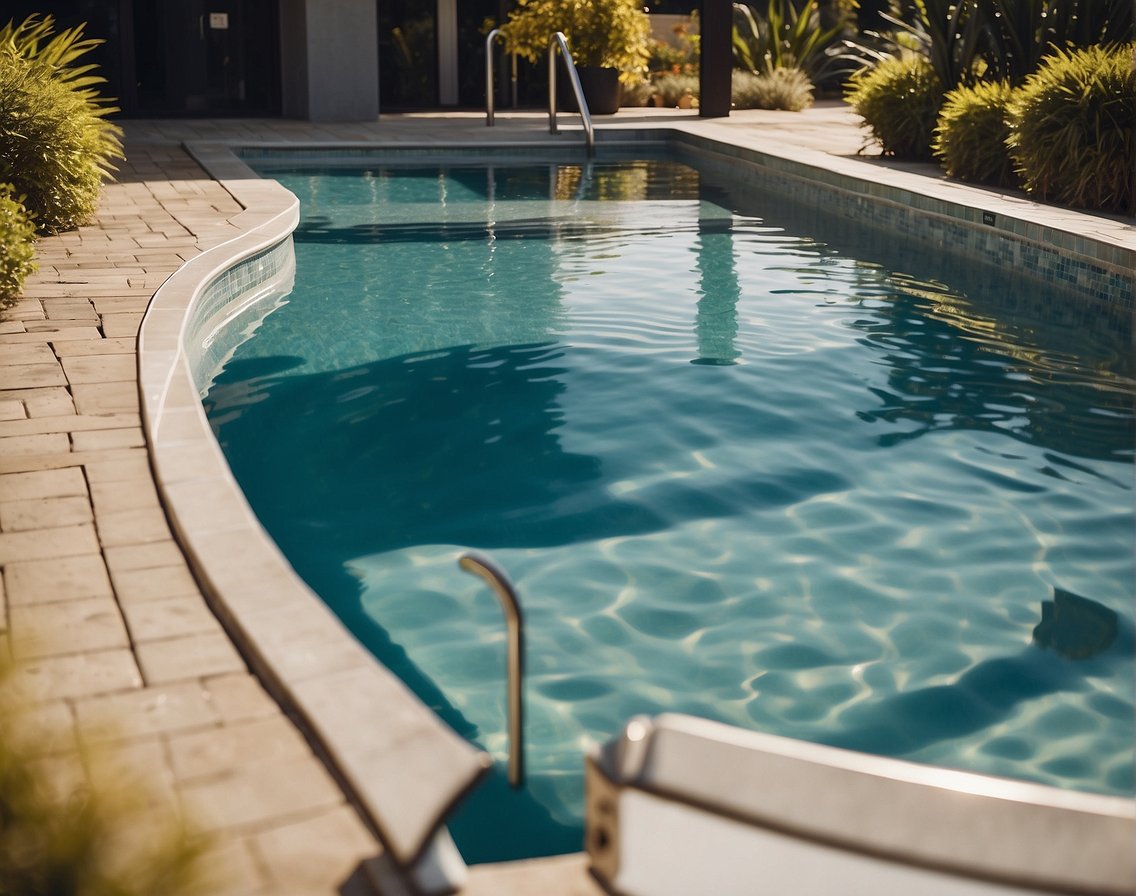
In our pools, a robust filtration and circulation system are integral to maintaining clear and clean water. We prioritize effective filtration and consistent water movement to avoid common issues such as cloudiness and algae growth.
Importance of Regular Filter Cleaning
Regular cleaning of our pool filter is essential to our filtration system’s efficiency. Filters trap contaminants, but over time they accumulate debris, reducing their effectiveness. Sand filters require backwashing, which involves reversing water flow to flush out the trapped dirt. Cartridge filters, on the other hand, need to be removed and physically cleaned. It’s crucial to routinely inspect and clean our filter media to ensure optimal filtration performance.
Ensuring Adequate Water Circulation
Adequate water circulation is achieved by maintaining a well-functioning pool pump. This pump is the heart of our circulation system, propelling water through the pool filter and back into the pool. We ensure the pump runs for sufficient time daily, generally 8–12 hours, allowing water to pass through the filtration system multiple times. This aids in distributing chemicals evenly and prevents stagnant areas that can become breeding grounds for bacteria and algae. Proper circulation is synonymous with a well-maintained and clear pool.
Comprehensive Pool Cleaning Procedures
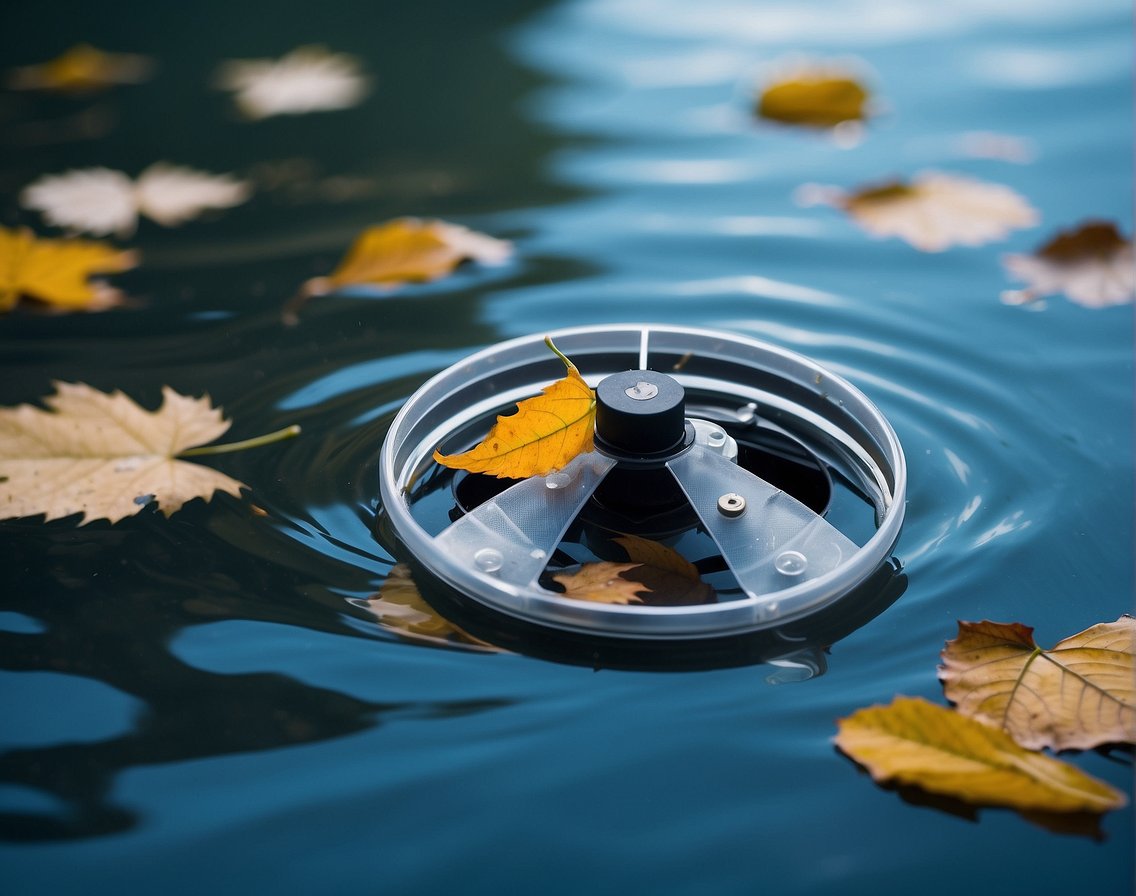
To maintain a pristine swimming pool, we must integrate regular brushing and vacuuming within our pool care routine.
Brushing Pool Walls and Floor
We initiate our pool cleaning by thoroughly brushing the pool walls and floor. This is a critical step in detaching algae, calcium build-up, and other deposits that cling to the surfaces. We employ a pool brush with stiff bristles for concrete pools and a softer brush for vinyl or fiberglass pools. Each week, we ensure to brush:
- The walls
- The floor
- Behind ladders
- Around the steps
Vacuuming and Removing Settled Debris
Following the brushing, we focus on vacuuming to remove the loosened debris. This involves the use of a manual pool vacuum, consisting of a vacuum head, hose, and a telescopic pole, to ensure all areas of the pool are reached, including corners and under ladders. The vacuuming process should be methodical and overlapping to avoid missing any spots. Here is a strategic approach to vacuuming:
- Attach the pool vacuum head to the telescopic pole.
- Connect one end of the hose to the vacuum head.
- Prime the hose by filling it with water to remove air.
- Connect the other end of the hose to the skimmer or dedicated vacuum line.
- Move the vacuum head slowly across the pool floor and walls in an overlapping pattern, ensuring full coverage.
Through these procedures, we help to guarantee the swimming pool remains clean and inviting, while optimizing the effectiveness of pool chemicals and enhancing the longevity of the pool.
Preventing and Addressing Common Pool Issues
Regular pool skimming is pivotal in thwarting common troubles such as unchecked algae growth and premature wear and tear of pool equipment. By maintaining diligence, we can assure both water quality and the longevity of the pool’s mechanical systems.
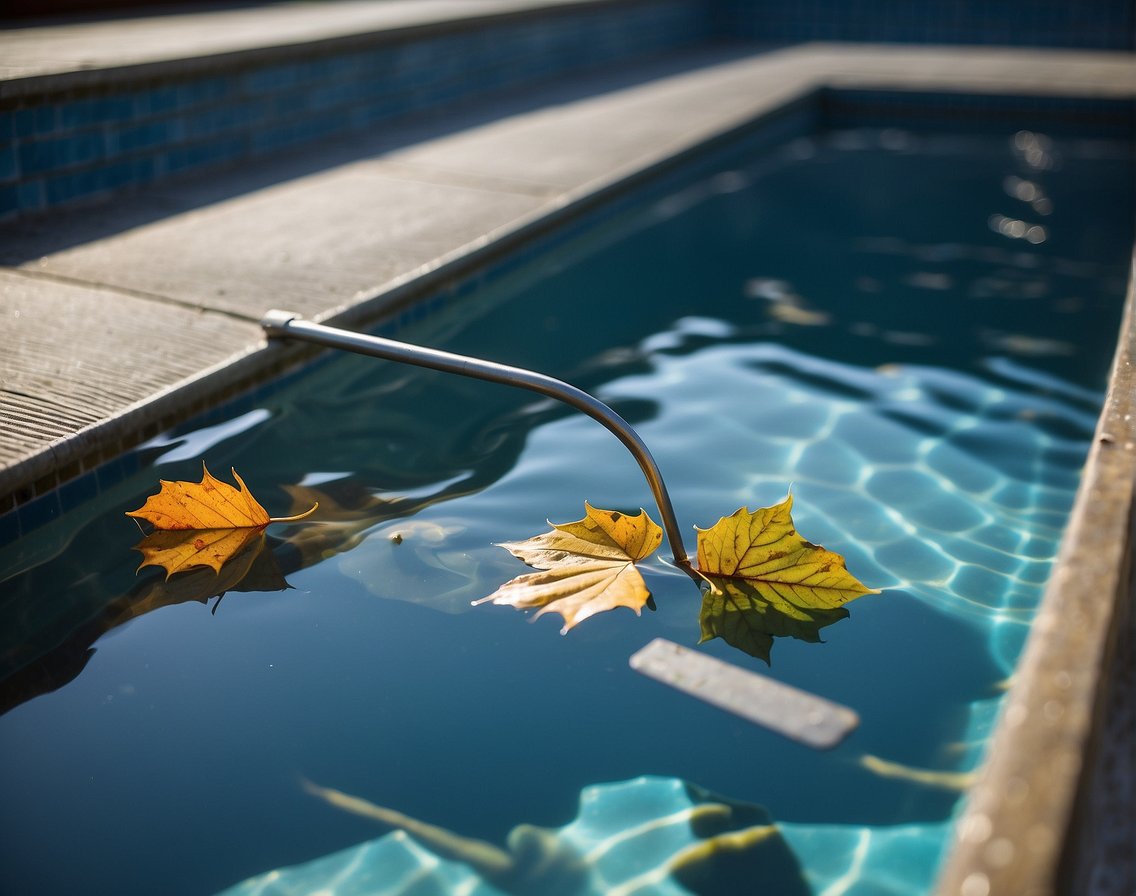
Controlling Algae Growth
Algae are persistent organisms that can cloud our pools and cause water quality issues, including increased risk of skin and eye irritation. To control algae growth:
- Maintain pH levels: Keep the pool water’s pH between 7.2 and 7.8 to inhibit algae proliferation.
- Regular Shock Treatments: Use chlorine-based shock treatments weekly to kill algae and other pathogens.
- Algaecides: When necessary, incorporate algaecides as part of our routine to target and prevent algae.
Addressing Equipment Wear and Tear
Pool equipment failure can stem from untreated water causing corrosion or the accumulation of contaminants. To preserve the pool works:
- Regular Inspections: Conduct routine checks on the equipment to identify any signs of deterioration early.
- Clean Skimmer Baskets: Empty and clean skimmer baskets regularly to prevent clogs and ensure efficient operation.
- Proper Chemical Balance: Ensure that the water is neither too acidic nor basic, which can damage pump seals and other components.
By following these guidelines, our efforts will maintain water clarity and health, safeguarding against contaminants such as harmful bacteria, along with unwanted additives like soap and sunscreen that swimmers may bring into the pool.
Frequently Asked Questions
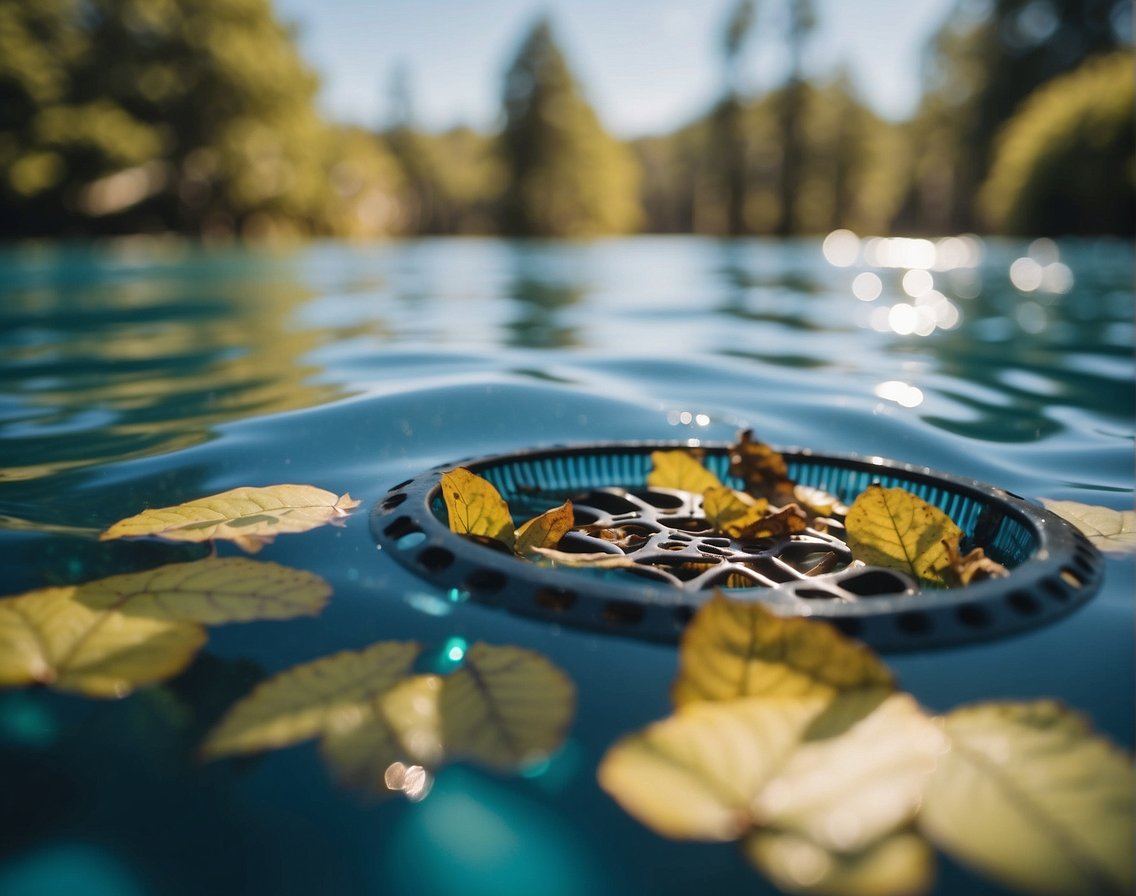
Regular pool skimming is a cornerstone of maintaining crystal-clear pool water. We address common queries to help streamline your pool care routine.
What maintenance routines are essential for maintaining pool clarity?
To ensure pool clarity, daily skimming to remove debris, weekly vacuuming, and maintaining chemical balance are essential. Regular filter cleaning and periodic shocking of the pool also help sustain clear water.
Can frequent skimming reduce the need for chemicals in my pool?
Yes, by frequently skimming and removing debris, algae and bacteria have fewer nutrients to thrive on, which can subsequently reduce the amount of sanitizing chemicals needed.
How does skimming affect the overall health of a swimming pool?
Skimming routinely eliminates contaminants that cloud water and clog filters, improving water circulation and efficiency of pool chemicals, which contributes to the overall health of the swimming pool.
What are the consequences of not skimming a pool regularly?
Neglecting regular skimming can lead to murky water, algae growth, clogged filters, and eventual damage to pool equipment, requiring more maintenance and potential repairs.
What tools are recommended for effective pool skimming?
We recommend a sturdy, fine-mesh pool net attached to a telescopic pole for reaching across the pool, and an automatic pool skimmer for continuous surface cleaning.
How does the environment around my pool impact the skimming schedule?
The environment plays a significant role in the skimming schedule. Pools surrounded by trees or in windy areas may require more frequent skimming to manage the influx of leaves and debris.
